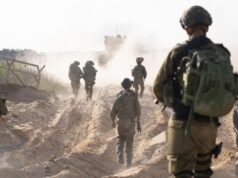A suicide bombing killed at least 22 people outside a government building in the northwestern Pakistani town of Mardan on Tuesday. The bombing marks just the latest in a series of bloody terror attacks in the country this year following a crackdown initiated by security forces last January.
Media reports indicate that the terrorist drove an explosives-laden motorcycle to a National Database and Registration Authority (Nadra) building and blew himself up as security officers approached. Approximately, 75 people were injured, 25 of them critically, according to police at the scene. Jamaat ur Ahrar, a hardline faction of the Pakistani Taliban wishing to impose Sharia law claimed responsibility for the attack, saying the office was a legitimate government target.

The attack has been claimed by a faction of the Pakistani Taliban. (Photo: BBC News) |
Earlier this year elements of the Pakistani Taliban, also know by the name of its umbrella organization Tehrik-i-Taliban Pakistan (TTP), also carried out bombings. Most attacks target government offices, military facilities, or Shiite neighborhoods, but incidents by the TTP have become less common.
A few months after a Taliban attack killed almost 150 school children in December 2014, Islamabad implemented a new National Action Plan empowering military and civil institutions to more aggressively pursue terrorists. With wide backing from across the mainstream political spectrum, the government enhanced the ability of separate agencies to share information, codified a special military tribunal court to hear terrorism cases, and created a specialized counter-terrorism unit. Similarly, Operation Zarb-e-Azb, started in 2014 but intensified in 2015, directed the Army to purge militants in the Federally Administered Tribal Areas (FATA) along the northwest border with Afghanistan.
Consequently, the security forces successfully decreased the number attacks and almost halved the number of people killed by terrorism in 2015 compared to 2014, according to the Wall Street Journal. On the other hand, taking on the militants in the Tribal regions has displace fighters, forcing many back into Afghanistan but also into more urban Pakistani slums. Meanwhile, the Islamist groups making up the TTP have also splintered along ideological lines, with some subgroups – worried about their image – becoming less willing to target civilians in public to achieve their political goals.





